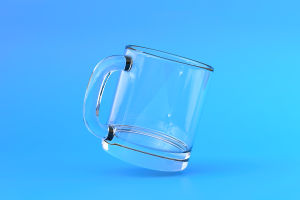In our daily lives, a measuring tape is a rather ordinary tool.
Whether for renovations, furniture placement, or simple DIY projects, the measuring tape plays an essential role as a measurement tool.
However, many might not realize that a measuring tape has several hidden features.
1. The Small Hole at the End
Have you ever noticed that the metal clip at the end of a measuring tape often has a small hole? This hole is a very clever design. When using a measuring tape, especially when measuring long distances alone, it can be not easy to stabilize one end of the tape.
The purpose of this hole is to hook the tape onto a nail or screw. This is particularly helpful when you need to measure long objects by yourself. By hooking the end of the tape onto a nail, you can easily complete the measurement without needing assistance from someone else.
With this small hole, you can secure the measuring tape to any protruding object, such as a nail, bolt, or even a small hook on the wall. This function not only stabilizes the measurement but also improves accuracy by preventing the tape from slipping or causing measurement errors.
2. The Serrated Edge at the End
In addition to the small hole, some measuring tapes have fine serrations on the metal clip at the end. These serrations are designed to help you make marks during the measurement process.
If you don’t have a pencil or marker, you can use the serrated edge to scratch a slight mark on surfaces like wood, metal, or plastic. This is especially convenient for renovation or DIY work, as it allows you to quickly mark measurement points.
For instance, when measuring on wood and you don’t have a marking tool nearby, the serrated edge can come in handy. With this feature, you can precisely mark the measurement results anytime and anywhere, saving both time and effort.
3. Double-Sided Measurements
Many measuring tapes have measurements printed not only on the front but also on the back.
You might wonder why both sides need markings. This design improves readability from different angles. Imagine measuring in a narrow space where you can only see the back of the tape. In such cases, the double-sided design becomes useful.
For example, when measuring the length of an object at a lower position and you have to bend or squat, the markings on the back allow you to read the measurement without changing your posture, thus improving measurement efficiency.
4. Impact-Resistant Design
Many people may not notice that the casing of a measuring tape is typically made of sturdy plastic or metal, offering strong impact resistance.
This feature prevents damage to the tape’s internal spring mechanism or measurement band if the tape is dropped from a height. High-quality measuring tapes even undergo special treatment to ensure they function properly in harsh environments.
This design makes the tape more durable in everyday use, especially for construction workers or renovation professionals who often need to use the tape in various environments. Whether on muddy construction sites or during high-altitude measurements, the impact-resistant design ensures the tape isn’t easily damaged, extending its lifespan.
Conclusion
As a common tool in everyday life, the measuring tape hides many clever designs that you may not have noticed before. Understanding and utilizing these hidden features can improve your measurement efficiency and make daily tasks easier to manage.
The next time you pick up a measuring tape, take note of these hidden features—you might discover that it’s far more versatile than you ever imagined.


